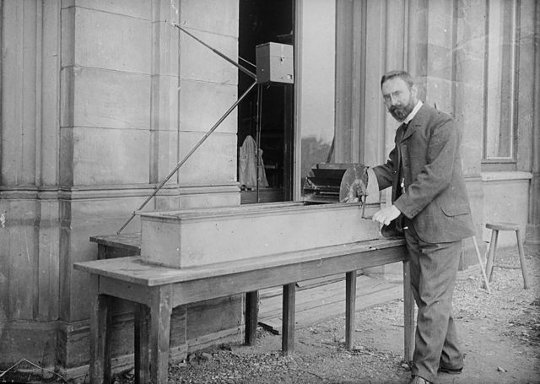
Ludwig Prandtl: Real Fluids Explained
Prior to Ludwig Prandtl (1875 - 1953), analytic analysis of fluids with an early form of Computational Fluid Dynamics (CFD), confined to paper and pencil, assumed ideal inviscid potential flow. However, this approach was less than ideal at predicting drag (d'Alembert's paradox) and airfoil stall, which was a pressing problem for engineers at the dawn of powered heavier-than-air flight. Prandtl developed practical theories for real fluids that found favor with aircraft designers. Also, like Osborne Reynolds before him, Prandtl had a non-dimensional number, the Prandtl Number, named after him.
The Life and Times of Ludwig PrandtlTold by Eberhard Bodenschatz
Prandtl proposed that real fluids have viscosity, which cannot be ignored (or assumed insignificant) as it leads to the formation of boundary layers wherever a fluid flows past a surface, which in turn creates a force - drag. With a blend of careful experiments (using early water and wind tunnels) and theory, Prandtl popularized the concept of the boundary layer and showed how it gave rise to flow separation. This approach elegantly explained the easily observed flow separation behind a sphere. From this foundation Prandtl went on to provide practical theories for airfoil design, thus restoring faith in analytical approaches to aerodynamics.
 Ludwig Prandtl 1904At the University of Gottingen. Licensed under Public domain via Wikimedia Commons
Ludwig Prandtl 1904At the University of Gottingen. Licensed under Public domain via Wikimedia Commons
Prandtl tutored a number of notable fluid dynamists who went on to become major contributors in their own right, such as:
- Theodore von Karman - made key advances in aerodynamics
- Paul Richard Heinrich Blasius - formulated an analytic 2D boundary layer description
- Albert Betz - pioneer in wind turbines and formulated maximum wind turbine efficiency theory, Betz' Law
In his later years Prandtl focused on experiments and theory to better understanding the fundamental structures found in turbulent flow. This was a continuation of his work on boundary layers, only at a more microscopic level.
Thanks to Prandtl and other pioneers we now have analytic tools available in the form of CFD that can provide realistic insights into complex fluid flow prior to constructing physical objects.
Recent blog posts
- CFD Simulates Distant Past
- Background on the Caedium v6.0 Release
- Long-Necked Dinosaurs Succumb To CFD
- CFD Provides Insight Into Mystery Fossils
- Wind Turbine Design According to Insects
- Runners Discover Drafting
- Wind Tunnel and CFD Reveal Best Cycling Tuck
- Active Aerodynamics on the Lamborghini Huracán Performante
- Fluidic Logic
- Stonehenge Vortex Revealed as April Fools' Day Distortion Field
